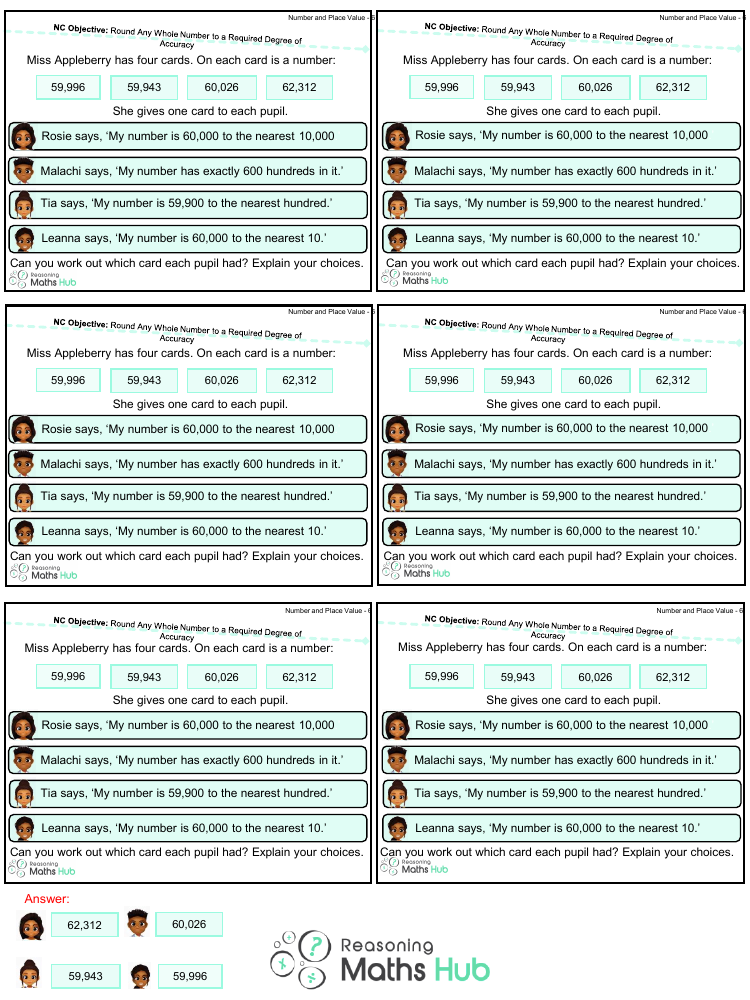Round any whole number to a required degree of accuracy - Reasoning

Maths Resource Description
Miss Appleberry's classroom activity involves understanding the concept of rounding numbers to various degrees of accuracy. Each pupil is given a card with a different number and is tasked with describing how their number rounds to a specific place value. Rosie's number rounds to 60,000 when rounded to the nearest 10,000, which suggests her card could be either 59,996 or 60,026 as both of these round to 60,000 at that scale. Malachi's card contains a number with exactly 600 hundreds, which equates to 60,000, and thus his card must be 60,026. Tia's number rounds to 59,900 to the nearest hundred, which indicates her card is 59,943 as it is the closest to this rounded figure. Lastly, Leanna's number is 60,000 to the nearest 10, suggesting her card is 59,996, as it would round up to 60,000 at that precision. Through this process, we deduce that Rosie must have the remaining card, which is 62,312, since it is the only one that rounds to 60,000 to the nearest 10,000.
The reasoning behind the allocation of the cards is based on the rules of rounding numbers. When rounding to the nearest 10,000, any number from 55,000 to 64,999 would round to 60,000, which applies to Rosie's statement. For Malachi, having exactly 600 hundreds means his number must be 60,000 without any additional thousands, hundreds, tens, or ones, which applies only to the number 60,026. Tia's card, when rounded to the nearest hundred, is below 59,950 and therefore must be 59,943. Leanna's statement requires her card to be just under 60,000, rounding up to 60,000 when considering the nearest 10, which is true for 59,996. This exercise demonstrates the practical application of rounding numbers and place value understanding in a classroom setting.